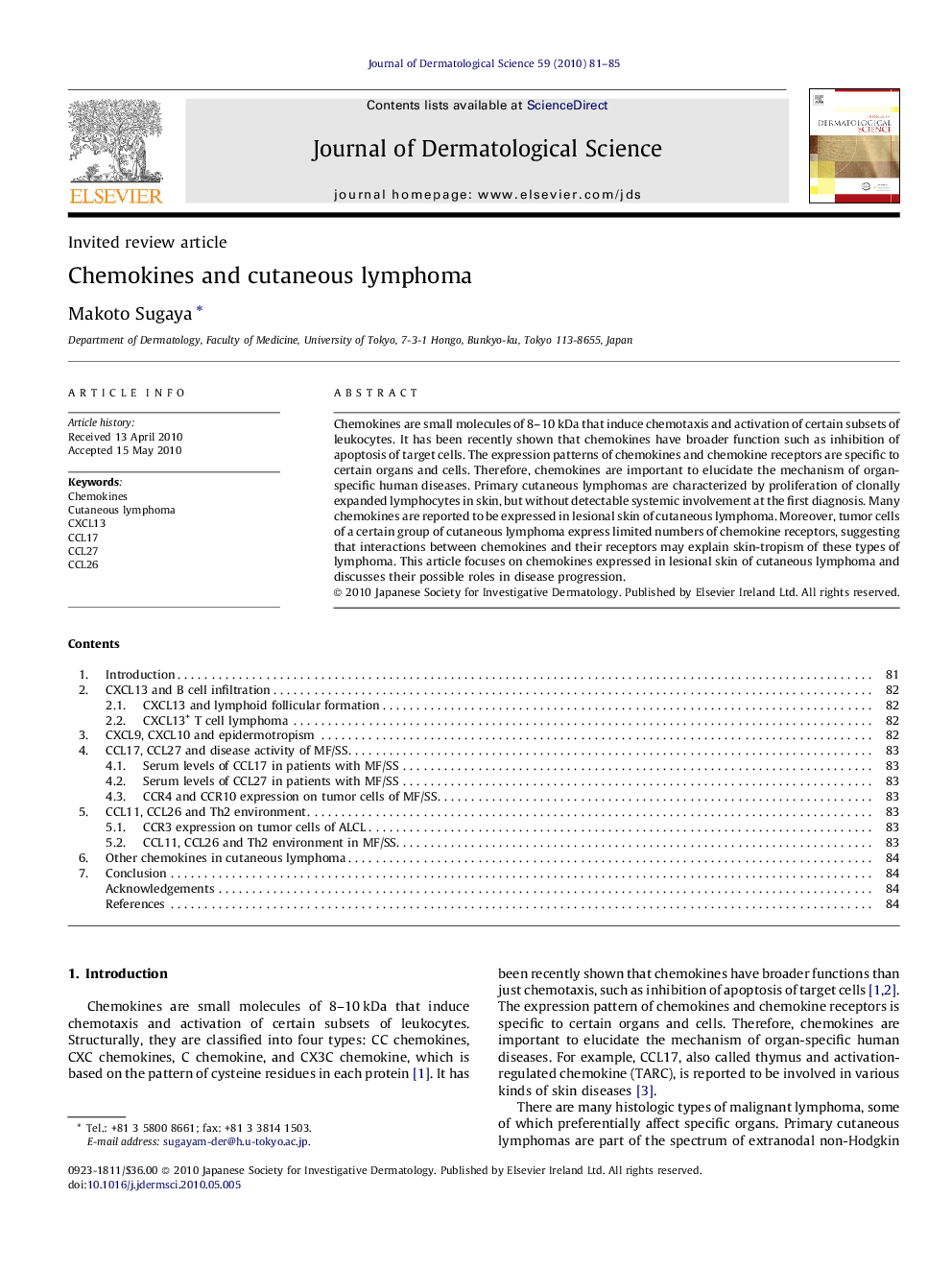| Article ID | Journal | Published Year | Pages | File Type |
|---|---|---|---|---|
| 3213690 | Journal of Dermatological Science | 2010 | 5 Pages |
Chemokines are small molecules of 8–10 kDa that induce chemotaxis and activation of certain subsets of leukocytes. It has been recently shown that chemokines have broader function such as inhibition of apoptosis of target cells. The expression patterns of chemokines and chemokine receptors are specific to certain organs and cells. Therefore, chemokines are important to elucidate the mechanism of organ-specific human diseases. Primary cutaneous lymphomas are characterized by proliferation of clonally expanded lymphocytes in skin, but without detectable systemic involvement at the first diagnosis. Many chemokines are reported to be expressed in lesional skin of cutaneous lymphoma. Moreover, tumor cells of a certain group of cutaneous lymphoma express limited numbers of chemokine receptors, suggesting that interactions between chemokines and their receptors may explain skin-tropism of these types of lymphoma. This article focuses on chemokines expressed in lesional skin of cutaneous lymphoma and discusses their possible roles in disease progression.
